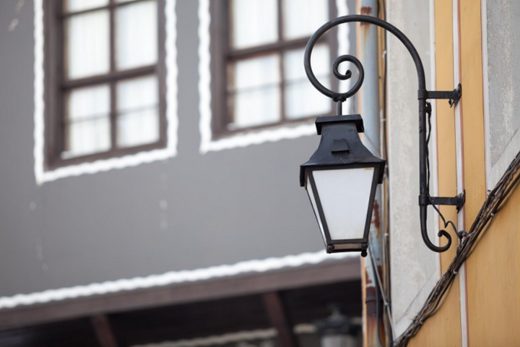Smart packing tips for homes designed with minimalist architecture, Home move advice
Smart Packing Tips for Homes Designed with Minimalist Architecture
24 January 2025
Living a minimalist lifestyle is more than just looks. It’s a smart way to make moving easier. If you’re searching for the best packing tips, this guide is for you. Minimalist homes focus on simplicity and using space wisely.
So, your packing should follow these rules too. By making your packing process simple, you’ll move smoothly. This will fit perfectly with your minimalist way of life.
Key Takeaways
- Understand the principles of minimalist architecture for effective packing.
- Utilize packing tips for moving that prioritize simplicity and organization.
- Essential supplies help streamline the packing process.
- A well-thought-out packing timeline eases the moving journey.
- Decluttering is crucial before packing to create a fresh start.
- Labeling systems keep your items organized during the move.
Understanding Minimalist Architecture
Minimalist architecture is all about simplicity. It features clean lines and open spaces. This style gets rid of extra decorations, focusing on what’s needed.
It makes spaces feel calm and clear. By following minimalist design, you connect with your space in a deeper way.
At the heart of minimalist architecture is natural light and the right materials. Big windows bring the outdoors in. Materials like wood and stone add texture without being too much.
Learning about minimalist design helps you pack and organize better. When moving to a minimalist space, think about each item’s impact. A thoughtful approach improves your space and matches minimalist values.
Benefits of a Minimalist Lifestyle
Living a minimalist life has many benefits of minimalism. You might feel less stressed, which helps you focus better. An organized space brings calmness, making you feel good.
Minimalism also makes your space quieter and more welcoming. This is because there’s less stuff around.
The minimalist lifestyle advantages go beyond just looking good. It makes choosing what to do easier. With fewer things, you can move faster and pack lighter.
Every item you have has a reason to be there. This helps keep your mind clear.
Essential Packing Supplies for Minimalist Homes
When moving into a minimalist home, picking the right packing supplies is key. Using efficient and green materials makes packing easier. It also shows your dedication to living simply.
Choosing the Right Boxes
Choose boxes that fit your items well to save space and cut down on waste. The right size helps pack more efficiently, using less stuff. Here are some good options:
- Small boxes for books and heavy items
- Medium boxes for kitchen supplies
- Large boxes for lightweight, bulky items
Utilizing Eco-Friendly Packing Materials
Go for packing options that are good for the planet. These materials protect your stuff and help you move in a green way. Some top picks are:
- Biodegradable packing peanuts
- Recycled cardboard boxes
- Reusable fabric bags for clothes and linens
Using these green packing materials cuts down on waste during your move. It keeps your minimalist lifestyle intact.
Smart Packing Tips for Moving
Starting a move can feel overwhelming. But, with smart packing tips, it can be easier. Start by sorting your items by how often you use them. This way, you can keep your daily needs easy to find.
Organizing your belongings helps save time and lowers stress. It makes moving day smoother and less hectic. Below tips from professional packing service providers at Mustang Moving can help you pack for the move smartly.
Prioritizing Items Based on Usage
First, sort your items into three groups. This makes packing more efficient.
- Essential Items: Things you need right away, like toiletries and kitchenware.
- Occasional Items: Less used items, like holiday decorations.
- Non-Essential Items: Things you can pack away for a bit, like books.
This method lets you unpack your essentials first. Then, you can pack away less important items. This makes your move more organized.
Creating a Packing Timeline
Having a packing plan helps avoid last-minute stress. Start planning a few weeks early. Break tasks into smaller steps.
4 Weeks Before: Start decluttering, donate things you don’t need.
3 Weeks Before: Get your packing supplies and start on non-essentials.
2 Weeks Before: Pack items you don’t use often, label boxes.
1 Week Before: Pack essentials, prepare a moving day kit.
A good packing plan keeps you organized. It makes moving to your new place easier.
Organizing Your Space Before Packing
Before you start packing, it’s key to organize and declutter. This ensures you only take what you really need to your new home. Sorting through your stuff can make moving easier and less stressful.
Decluttering Effectively
Decluttering helps you keep only what’s truly important. Try the 80/20 rule, which means you need only 20% of your items 80% of the time. Think about if each item is a must-have in your life. If not, it might be time to donate, recycle, or throw it away.
This approach not only makes your move lighter but also supports a minimalist lifestyle.
Grouping Similar Items Together
After you’ve decluttered, group similar items for easier packing. Set up areas for different things like kitchen stuff, clothes, and personal items. This way, you can quickly see what to pack and where.
When you arrive at your new place, this method will help you unpack and settle in faster.
Maximizing Space in Packing
Packing smart is key to a smooth move, even in small spaces. Using clever techniques can make every inch count. This way, you can keep your packing organized and true to minimalist values.
Vertical Packing Techniques
Vertical packing is a great way to use your box’s height. Roll clothes instead of folding them to save space and avoid wrinkles. Stack items like shoes on their sides or mix smaller items in one box.
Think about using fitted packing cubes. They help keep things organized and make the most of your box’s height.
Space-Saving Tips with Minimalist Design
Space-saving tips fit well with minimalist design. Use vacuum-sealed bags for bulky items like bedding and winter clothes. They shrink down a lot and free up space.
Always pack heavier items at the bottom of boxes. This makes them stable and saves space. Keep things simple with clear bins. They let you see what’s inside easily, helping you stay organized.
Labeling and Inventory Management
Labeling and managing your inventory well can make moving easier. A good labeling system helps you find what’s inside boxes quickly. Keeping an inventory ensures you don’t lose anything during the move.
Creating an Efficient Labeling System
Make a labeling system that works for you. Here are some tips to help:
- Color Coding: Use different colors for different rooms, like kitchen or bedroom, for easy spotting.
- Room Labels: Label each box with its room. This tells movers where to put it in your new place.
- Contents Description: Write a short note on each label about what’s inside. It saves time when you need to find something.
- Unique Numbering: Number boxes and keep a master list. It makes tracking items easy.
Keeping Inventory of Packed Items
Good inventory management keeps track of all your items. Follow these steps for a smooth process:
- Create a Master Inventory List: List each box’s number and what’s inside. You can do this on paper or digitally.
- Regular Updates: Update your list as you pack and unpack. It keeps your records accurate and helps avoid lost items.
- Use Inventory Apps: Look into apps for managing inventory. Many let you scan barcodes for tracking.
- Check for Damage: Check items when you arrive at your new home. Note any damage on your list.
Using these labeling and inventory tips can make your move better. Being organized and clear can reduce stress and make unpacking easier in your new space.
Packing Fragile Items Safely
Packing fragile items can be tricky, even when you’re keeping things simple. You need to protect your delicate items without using too much stuff. Safe packing methods help a lot in keeping your items safe during travel.
Using Minimalist Packing Techniques for Fragility
It’s key to use simple packing methods for fragile items. Pick smaller boxes to keep things steady. Use soft, light materials like recycled paper or eco-friendly bubble wrap. These protect your items and fit with a simple lifestyle.
Securing Items to Prevent Breakage
Good securing methods make your fragile items last longer. Put heavier items at the box’s bottom and lighter ones on top. Fill gaps with soft stuff to stop things from moving. Make sure to label boxes with fragile items clearly, so they get the care they need.
Loading the Moving Vehicle
Getting your belongings to their new home safely is key. Knowing how to pack boxes well is crucial. Arrange items by weight, size, and how fragile they are. This helps use space wisely and keeps things safe during the move.
Strategic Placement of Boxes
Start by putting heavy boxes at the bottom and light ones on top. This keeps things from getting damaged and makes the load stable. Here are some tips for a balanced load:
- Place big items like appliances and furniture against the walls.
- Use small boxes to fill in gaps to stop things from moving around.
- Organize boxes by room to make unloading easier at your new place.
Maximizing Efficiency During Transit
Planning how to pack your items is important. It helps keep them safe and makes the most of your space. Here are ways to pack smart:
- Use straps or rope to keep everything in place.
- Use tarps or blankets to protect items from dirt and damage.
- Plan your route to avoid tight spots or low bridges.
Following these steps when loading can make your move smoother. It also keeps your belongings safe on the way.
Heavy Boxes: Bottom Layer, Provides stability and prevents crush damage.
Light Boxes: Top Layer, Keeps them secure and prevents shifting.
Furniture: Against Walls, Maximizes space and reduces the risk of breakage.
Fragile Items: In the Middle, Surrounded by soft materials for added protection.
Unpacking in Your New Minimalist Space
Unpacking is key when moving to a minimalist home. Good unpacking tips help make your new space calm and useful. Follow this guide for a smooth move into a home that shows your minimalist style.
Step-by-Step Unpacking Process
Start with a plan to unpack what you need first. Begin with essentials to make your home functional and cozy. Here’s how to unpack:
- Start with Common Areas: Unpack the living room and kitchen first for easy access to what you need.
- Move to Personal Spaces: Then, unpack your bedroom and bathroom essentials.
- Organize as You Go: Put things in their place as you unpack.
- Evaluate Each Item: Check if each item fits your minimalist lifestyle.
- Dispose of Unneeded Items: Now’s the time to get rid of things you don’t need.
Settling into Your Minimalist Environment
After unpacking, make your home feel right. Here’s how to settle in:
- Curate Your Space: Arrange your furniture and decor with purpose.
- Maintain Open Spaces: Keep your home open by using fewer decorations and clear surfaces.
- Incorporate Natural Elements: Add plants and natural light to make your home peaceful.
- Stay Committed to Minimalism: Keep your home clutter-free by regularly checking your belongings.
This organized unpacking lets you enjoy your new home while keeping it minimalist. With these tips, you’ll have a welcoming space that shows your values and priorities.
Tips for Maintaining Minimalism Post-Move
After moving into your new minimalist home, the journey continues. It’s important to keep your space organized and meaningful. Develop habits to manage new items wisely, keeping your home in balance.
Continuing the Decluttering Habit
Creating a decluttering routine can change your space. Set aside time each week to check your belongings. Here’s what to focus on:
- Regular Reviews: Go through rooms and evaluate items. Choose what adds value and what can go.
- The One-In-One-Out Rule: For every new item, remove one to keep balance.
- Clear Surfaces: Keep counters and shelves clear to keep your space calm.
Incorporating New Items Mindfully
Adding to your home should be thoughtful. To keep minimalism, follow these tips:
- Mindful Purchasing: Think if an item will really improve your life before buying.
- Quality Over Quantity: Choose fewer, better items that do more.
- Set Limits: Have a specific area for new items to avoid clutter.
By following these habits, you’ll keep your space organized and peaceful. This will help you enjoy your minimalist home for years to come.
Conclusion
Your journey to a minimalist lifestyle starts with smart packing. The tips in this article are key to a smooth transition. They help you organize your belongings and adopt a minimalist way of life.
Think of your move as a mental shift, not just a physical one. Let go of things you don’t need and keep your space clear. With the right mindset and organization, you’ll create a simple and intentional living space.
Using these packing tips, you’re on your way to a clutter-free home. This is crucial for enjoying the benefits of minimalism. Your new space will be functional and full of meaning. Also, If you feel overwhelmed by the thought of doing it all alone, consider hiring a professional packing & moving company like Mustang Moving to make your packing & moving experience stress-free.
FAQ
What are some effective tips for packing to move?
Start by getting rid of things you don’t need. Sort items by how often you use them. Make a packing plan and get the right supplies. Use eco-friendly stuff and pack vertically to save space.
How can I ensure that I am following minimalist principles while packing?
Pack only what you really need or love. Group similar items together. Use green packing materials and label things well for easy unpacking.
What packing supplies do I need for a minimalist home?
You’ll need the right size boxes and green packing stuff. Also, reusable bags and soft stuff for breakables. Think about using recycled boxes for a greener move.
How can I effectively declutter before my move?
Use the Marie Kondo method to keep only joyful items. Set aside time to go through each room carefully. Decide what to keep or toss thoughtfully.
What are some smart packing tips for moving?
Sort items by how often you use them. Make a packing plan. Start early and pack one room at a time to stay focused.
How do I keep track of my packed items?
Make a simple label system for boxes and keep an inventory list. This makes it easy to find what you need and unpack smoothly.
How can I safely pack fragile items?
Wrap fragile things in bubble wrap or soft clothes. Put them in boxes to keep them safe during the move.
What should I consider when loading the moving vehicle?
Put heavy boxes at the bottom and spread the weight evenly. Organize items for easy access. Make sure everything is tied down to avoid damage.
What tips can help me unpack efficiently in my new home?
Unpack step by step, starting with essentials. Then, unpack the rest. Arrange your space simply for a smooth transition.
How can I maintain minimalism after my move?
Keep decluttering by regularly checking your stuff. Be careful about adding new things. Make sure they fit your minimalist lifestyle and keep your space organized and calm.
Comments on this guide to Smart Packing Tips for Homes Designed with Minimalist Architecture article are welcome.
Lighting Articles
Lighting Posts
How to plan your outdoor lighting design

Getting your home filled with light

How Lighting Influences Mood and Productivity
Building Articles
Residential Architecture
Comments / photos for the Smart Packing Tips for Homes Designed with Minimalist Architecture page welcome.






